Climbing Hitches
Among the many knots that are regularly used in climbing, hitches are among the most common. They are very practical in a variety of setups, but they truly shine in rescue scenarios. Friction hitches like the prusik, klemheist, autoblock and bachman can be used to backup rappels, ascend a fixed rope and to haul a struggling or injured partner. Every climber should know these knots, how to tie them and when they might be useful in relation to the specific types of climbing that they do. This article is intended to provide a list of the most common hitches, their "normal" use, and a few pros/cons of each.
EDIT: I added in the name Machard knot to the autoblock based on this article,
The Machard Knot.
Types of Hitches
This is a list of hitches that are commonly used in climbing.
| Hitch Name | Material Used To Tie ****
| Uses
| Pros
| Cons
|
Prusik
| Small loop of cord
aka "Rescue loop".
| Functions as a friction hitch.
Can be used for ascending, hauling and a
wide variety of rescue techniques.
Good to backup rappel.
| Grips very well.
Takes loads in either direction.
| Hard to unload once weighted.
Sometimes grips too well.
|
Klemheist
| Small loop of cord
aka "Rescue loop"
or nylon runner.
| Functions as a friction hitch.
Can be used for ascending, hauling and a
wide variety of rescue techniques.
| Can be made with nylon sling.
Slides easily on the rope.
| Doesn't grip as well as the prusik.
Can damage the sling with use.
Works best in one direction only.
|
Machard
aka
Autoblock
| Small loop of cord
aka "Rescue loop".
| Functions as a friction hitch.
Can be used for ascending, hauling and a
wide variety of rescue techniques.
Good to backup rappel.
| Very easy to tie.
Slides easily on the rope.
Easy to release under load.
| Lower gripping strength than others.
Can release under load.
Needs to be set carefully.
|
Bachman
| Small loop of cord
aka "Rescue loop" and a carabiner.
| Functions as a friction hitch.
Can be used for ascending, hauling and a
wide variety of rescue techniques.
| Slides very easily on the rope.
Carabiner provides "handle".
Good for ascending setup.
| Lower gripping strength than others.
Pulling on carabiner can release the hitch.
Can release under load.
Works best in one direction only.
|
Girth Hitch
| Loop of cord.
Sling, runner, cordelette, etc.
| Used to connect slings to harness or to
natural features (i.e. trees).
| Very easy to connect slings to
harness and natural features.
| Greatly reduces slings breaking strength.
|
Clove Hitch
| Climbing rope.
| Used to anchor the rope (or cord) to
carabiners while being fully adjustable.
This is an excellent knot to "clip in" to the masterpoint.
| Strong and adjustable.
| Can cinch so tightly it cannot be untied
if a major load comes onto it.
|
Munter
| Climbing rope.
| Functions as an alternative to a belay device.
| Works well to belay and to rappel.
Also, can be used in rescue setups.
| Severely twists the rope.
|
Garda
| Climbing rope, 2 oval carabiners.
| Used to haul lighter loads and only allows the rope
to travel in one direction.
| Easy way to haul with only 2 carabiners.
| Can be hard to unweight.
|
****The material used to tie can vary widely depending on the intended use. The one noted above is in relation to the "Uses" listed in the table.
"Rescue Loops"
"Rescue Loops" are what people commonly carry to use while climbing.
![My 2 rescue loops.]()
My 2 "rescue loops" that are always on my harness. | ![Double fisherman]() Well-tightened and 2-3 inches of tail.
Well-tightened and 2-3 inches of tail.
|
Various diameters of cord are used, 6mm is very standard fare. Although longer loops can be used, I feel that it is better to use shorter loops and extend them with slings if needed. The ones shown are made out of approximately 4 feet of cord that is tied together using double fisherman knots with about 2-3 inches of tail.
Prusik
![undefined]()
This is the beginning of a 3-loop prusik. Make sure to make the knot pass through the loop so it does not become part of the hitch later.
| ![Prusik 2/3]() The one on the top has 2 loops completed and needs one to go.
The one on the top has 2 loops completed and needs one to go.
The bottom one is done and has been dressed properly.
|
![Prusik 3/3]()
A close up of a finished and dressed 3-loop prusik.
Notice that the knot is part of the loop, not the hitch. |
The number of loops that go into a prusik is based off of how thick your rope is and how thick your prusik cord is. 3 loops is very standard for both ascending and for backing up rappels. It is very important to have your knot dressed perfectly before weighting as it will jam very easily otherwise.
Klemheist
![Klemheist 1/4]() Starting a klemheist with a shoulder-length runner. Note that it is laying flat!
Starting a klemheist with a shoulder-length runner. Note that it is laying flat!
| ![Klemheist 2/4]() 4 loops are wrapped up the rope. The runner is still laying as flat as possible against itself. The loop on the top is shorter than the bottom one.
4 loops are wrapped up the rope. The runner is still laying as flat as possible against itself. The loop on the top is shorter than the bottom one.
|
![Klemheist 3/4]() Bring the bottom loop up and pass it through the shorter top loop. Pull it down to tighten the knot.
Bring the bottom loop up and pass it through the shorter top loop. Pull it down to tighten the knot.
| ![Klemheist 4/4]() A finished Klemheist. It is a one directional knot. Pushes up and grips down. The upper loop should be short enough that it does not pull down past the bottom of the hitch.
A finished Klemheist. It is a one directional knot. Pushes up and grips down. The upper loop should be short enough that it does not pull down past the bottom of the hitch.
|
This works perfectly with a shoulder-length runner, but it is important to use the wider nylon slings instead of the thin dyneema ones. Dyneema will not having the holding power that the nylon ones will. The stitched portion of the runner must not be part of the hitch, make sure it is hanging free in the lower loop. Also, the upper loop should be short enough that it does not pull down past the bottom of the hitch.
Machard aka Autoblock
![Autoblock 1/2]() This shows the beginning of an autoblock using my "rescue loops". 3-4 wraps are made around the rope while being careful to keep the strands of the cord parallel to each other.
This shows the beginning of an autoblock using my "rescue loops". 3-4 wraps are made around the rope while being careful to keep the strands of the cord parallel to each other. | ![Autoblock 2/2]() Finished autoblock. After the wraps are made, simply clip the ends with a carabiner.
Finished autoblock. After the wraps are made, simply clip the ends with a carabiner. |
Once again, it is important to keep the knot out of the hitch. The autoblock will work with 3-4 loops, but it does not have the same holding power as a prusik. This is an easy knot to tie.
Bachman
![Bachman 1/2]() Start a bachman by clipping your loop to an oval carabiner. Then pass the cord over the rope and through the carabiner 4-5 times.
Start a bachman by clipping your loop to an oval carabiner. Then pass the cord over the rope and through the carabiner 4-5 times.
| ![Bachman 2/2]() A finished bachman. You would clip to the loop hanging out the bottom of the carabiner. Be careful when weighting it to make sure that it holds a load.
A finished bachman. You would clip to the loop hanging out the bottom of the carabiner. Be careful when weighting it to make sure that it holds a load. |
This knot has much less holding power than the other friction hitches. 4 passes through the carabiner is a minimum and make sure it grips before fully weighting it. Tying a backup knot is a good idea with this one. Also, although any straight-spined carabiner will work, ovals will work better.
Girth Hitch
![Girth hitch 1/3]() Start by wrapping your sling around whatever it is that you'd like to girth hitch.
Start by wrapping your sling around whatever it is that you'd like to girth hitch.
| ![Girth hitch 2/3]() Pass the end with the stitching through the other end's loop.
Pass the end with the stitching through the other end's loop.
|
![Girth hitch 3/3]() Pull it tight. Make sure that the loop does not twist around whatever you've hitched, as it can reduce the breaking strength of the knot.
Pull it tight. Make sure that the loop does not twist around whatever you've hitched, as it can reduce the breaking strength of the knot.
|
The girth hitch is best used to sling objects and to connect slings to your harness (i.e. extending a belay device for rappels). It is not a good idea to use it to connect 2 slings together though, as this can cause them to break under much lower loads. There has been some discussion as to the orientation of the hitch and how it effects its strength, the photo above shows a good way to finish the hitch.
Clove Hitch
![Clove Hitch 1/3]() Starting a clove hitch by making 2 identical loops in the rope.
Starting a clove hitch by making 2 identical loops in the rope.
| ![Clove Hitch 2/3]() Lay the loops over each other. The left loop will lay ontop of the right loop.
Lay the loops over each other. The left loop will lay ontop of the right loop.
|
![Clove Hitch 3/3]() Then just clip both loops to a carabiner making sure to have the load-bearing side on the same side of the spine of the carabiner.
Then just clip both loops to a carabiner making sure to have the load-bearing side on the same side of the spine of the carabiner.
|
There are several different ways to tie a clove hitch and you should know them all. This is the easiest way to show it through photos so I'm chosing to share this one. This is an excellent knot to clip in to the masterpoint but make sure the loaded side is on the same side as the carabiner's spine. Tying a clove hitch and a munter are very similar, so make sure that you've actually tyed the correct knot before leaning back on it 5 pitches up at that hanging belay.
Munter
Additional Thoughts
The munter is a slightly confusing knot to tie using still photos, hence why I used the photo above. It starts very similar to a clove hitch and is easy to tie once learned. If you plan on belaying with a munter, know that the lead strand should be on the same side as the spine of the carabiner in case of a fall. Also, this knot will twist the rope severly, especially if used on a long rappel or something similar. For rappels, tying a backup is important as slack feeds through quickly and you may need to go hands-free to untwist the rope.
Garda
![Garda 1/4]() A garda starts with 2 matching carabiners clipped to the masterpoint. The gates should match and open the same way. Ovals work well.
A garda starts with 2 matching carabiners clipped to the masterpoint. The gates should match and open the same way. Ovals work well.
| ![Garda 2/4]() Clip the rope you will haul with through both carabiners. The right side will eventually be the side that the load is hauled up on.
Clip the rope you will haul with through both carabiners. The right side will eventually be the side that the load is hauled up on.
|
![Garda 3/4]() Pull up a loop from the non-hauling side (left in the photo) and clip it through the far carabiner only.
Pull up a loop from the non-hauling side (left in the photo) and clip it through the far carabiner only.
| ![Garda 4/4]() A close-up of the finished knot. Test it before relying on it though. Slack should only pull through in one direction.
A close-up of the finished knot. Test it before relying on it though. Slack should only pull through in one direction.
|
This is a cool knot and although it is easy to tie, it must be practiced first. Oval carabiners work a bit better than bent gates but both will grip the rope. Only problem with this is that it can be very difficult to release the hitch when it is fully loaded. Prying a nut tool between the carabiners can release it but may cause you to lose control of the load.
Order of Occurrence
Of these hitches, here is an approximate order from most common to least including the "normal" use(s).
Order
| Hitch
| Use(s)
|
1
| Girth Hitch
| Used to tie off features as protection and to extend belay device while rappelling.
|
2
| Clove Hitch
| Used to clip in to the masterpoint at belays and to adjust points while building anchors.
|
3
| Prusik
| Used to backup rappels and often a hitch of choice for ascending, hauling and crevasse rescue.
|
4
| Autoblock
| Used to backup rappels and sometimes a hitch of choice for ascending, hauling and crevasse rescue.
|
5
| Munter
| Used as a backup as an ATC while belaying and rappelling and also used to adjust systems during rescue techniques.
|
6
| Klemheist
| Used as a way to substitute a runner for a piece of cord for hauling, ascending and other rescue techniques.
|
7
| Bachman
| Used to ascend a fixed rope during rescue techniques and for crevasse rescue.
|
8
| Garda
| Used to haul light loads and can be a creative way to ascend a fixed line.
|
What does it all mean???
Hopefully this shows several options for hitches and gives scenarios where each might be needed. All of these knots are good to use in certain situations, and many of them have their own weaknesses as well. Knowing them all should almost be considered mandatory as well as learning rescue techniques where they will really become useful. As with all knots, they will not function correctly unless they are properly tied and well-dressed. Practice them at home before you try and use them outside so you are confident that you tie them correctly.
There were three pieces of rope wandering in the desert. They were very hot and thirsty. They came upon a bar and one went in. He asked for a drink and the bartender said, 'read the sign buddy we don't serve ropes.'
'Oh come on just this once', the rope asked again. The bartender said 'nope', so the rope left. The second rope figured he was a bit better looking and maybe the bartender would soften a little and let him have a drink. He went in and asked for a drink, the bartender shook his head and said 'Hey Buddy, it's just like I told your friend we don't serve ropes here.' Dejected the rope left the bar.
The 3rd rope heard both of their stories, thought for a moment.Then he rolled himself into a knot and fluffed the edges so it was a little frayed. The third rope went into the bar like this and asked for a drink.
The bartender asked, 'Hey are you a rope?' The 3rd rope looked down at himself and said 'Nope, I am a frayed knot!'
Climb on!


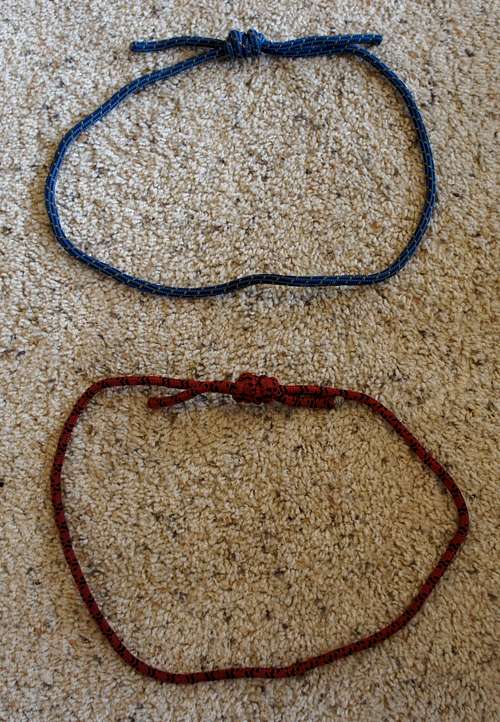
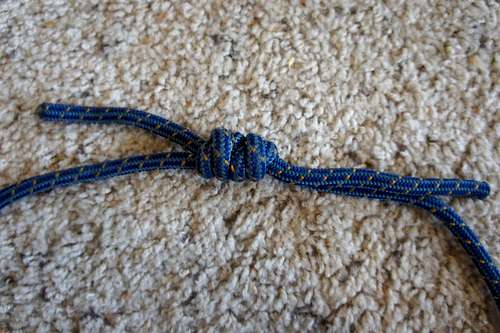

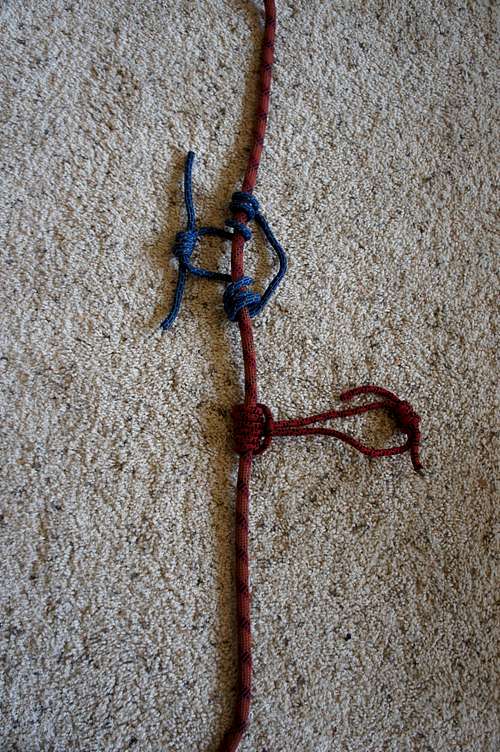



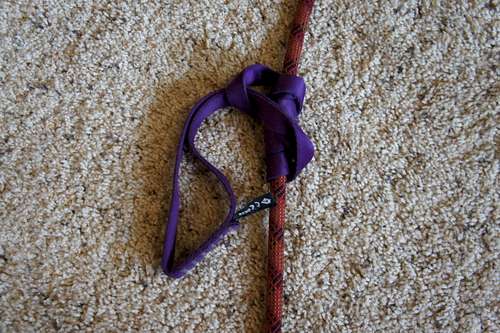

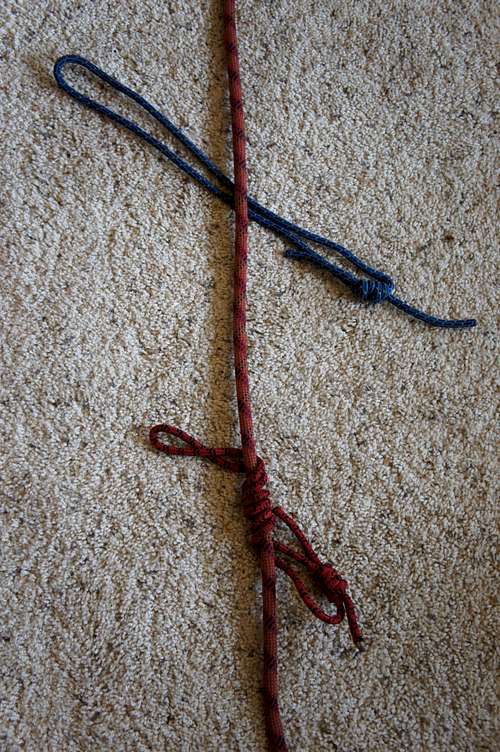
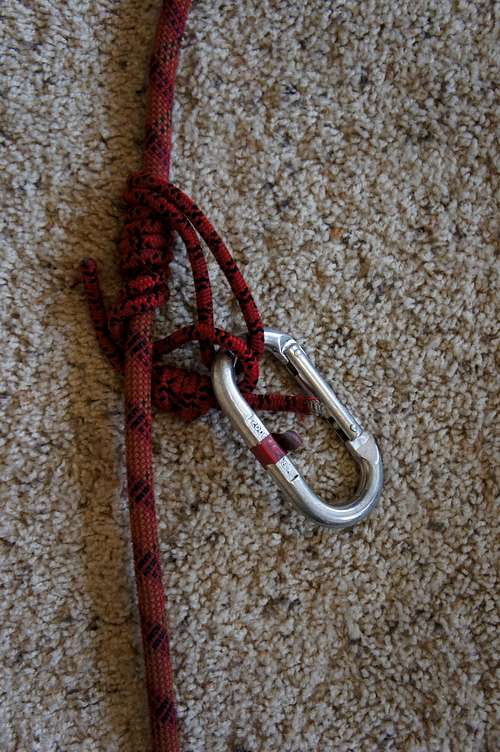
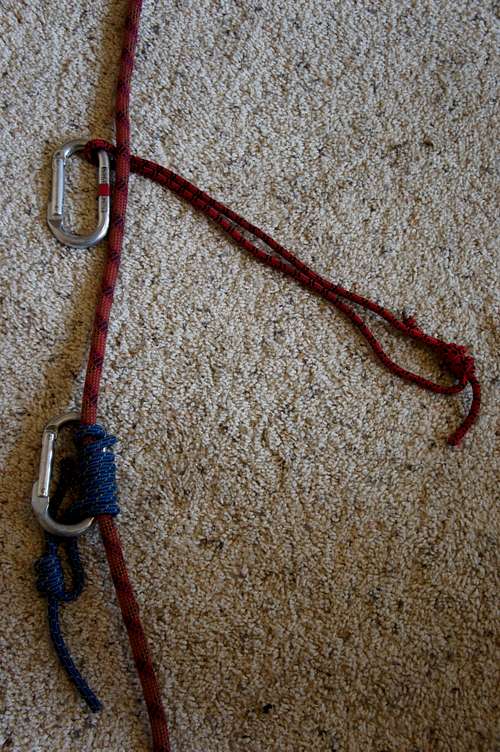
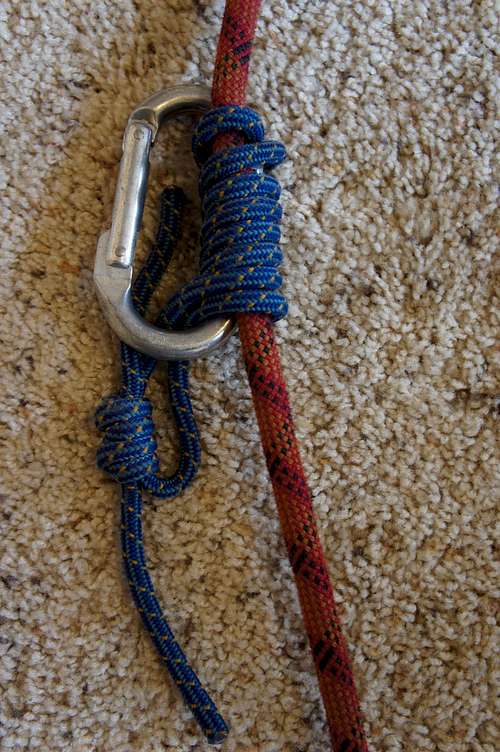
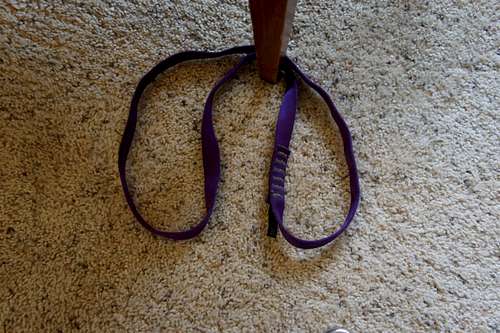
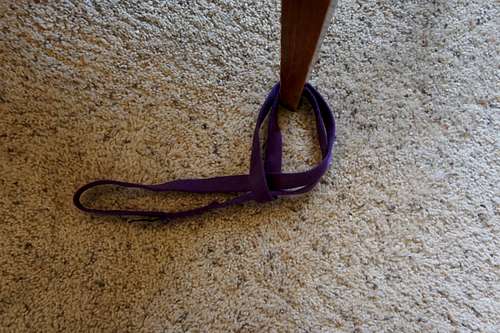
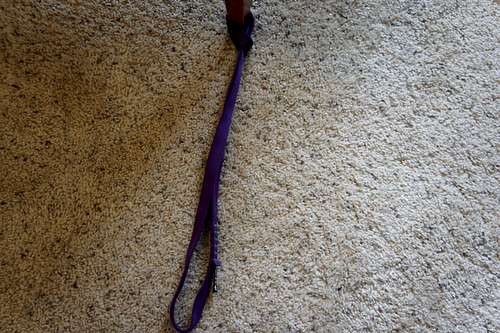
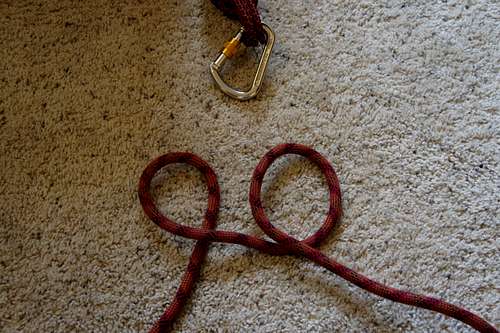

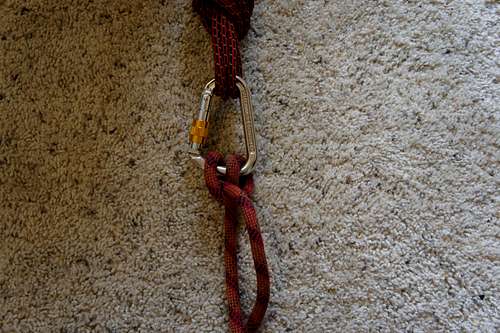
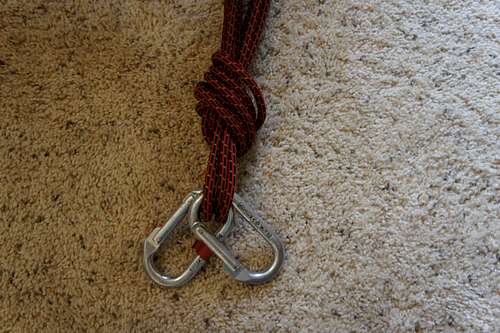
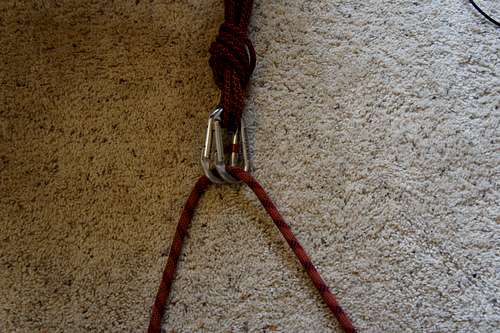
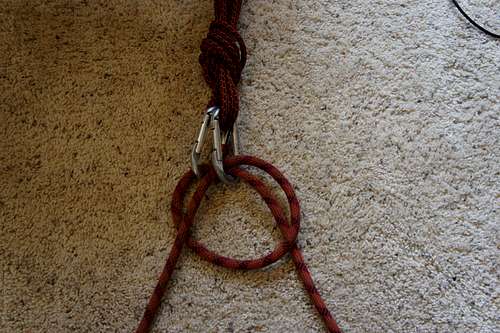
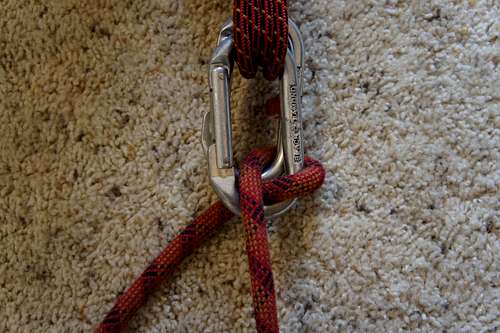








Comments
Post a Comment